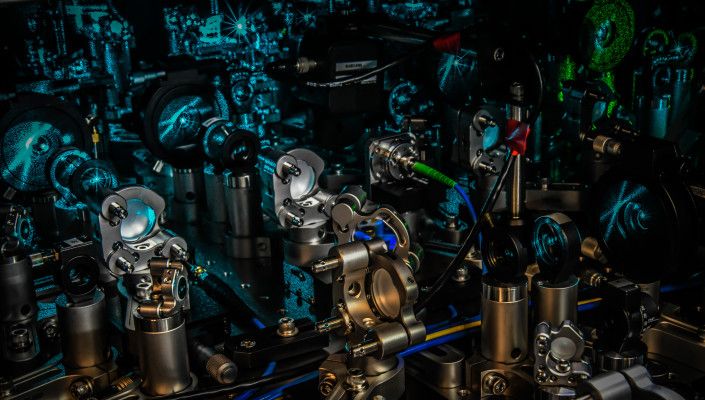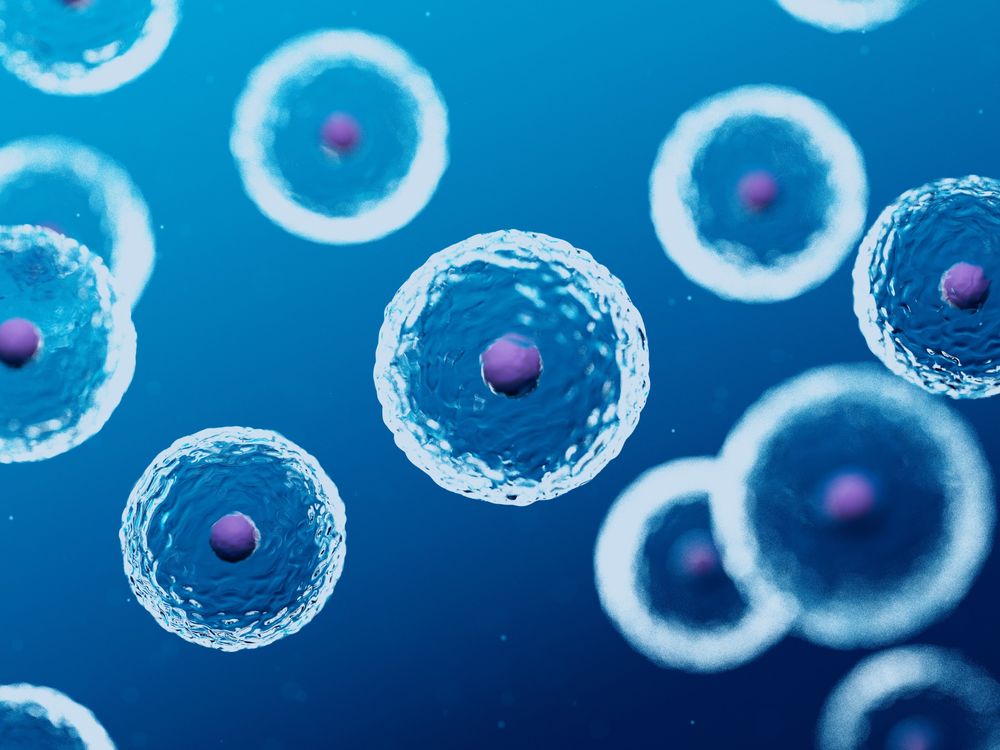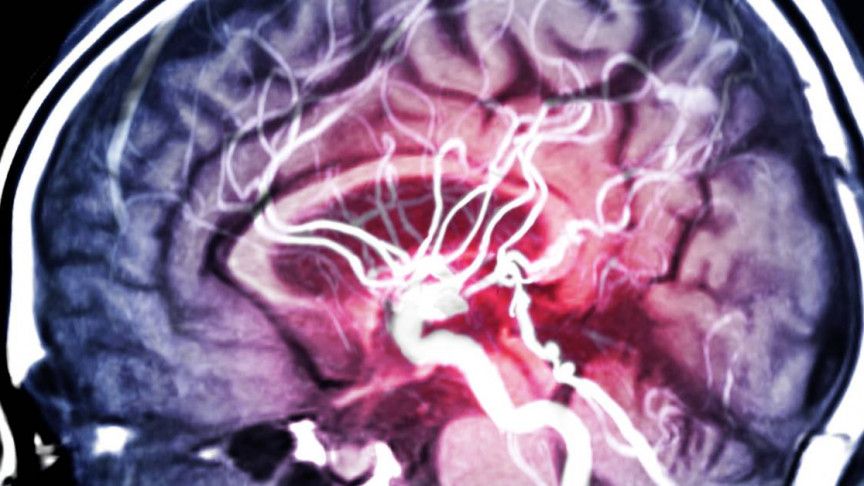DNA hacking could save humanity—or destroy it. Author Jamie Metzl joins Inside the Hive to discuss the future of designer babies.


With a small zap of electricity, biomedical engineers at Michigan Technological University take an underwater smart glue prototype from sticky to not in seven seconds.
Turning adhesion on and off is what makes a glue smart. It’s one thing to do this in the open air and quite another under water. Inspired by nature, catechols are synthetic compounds that mimic the wet-but-still-sticky proteins secreted by mussels and offer promise for smart adhesives that work in water. The technology could help with underwater glue, wound dressings, prosthetic attachments or even making car parts and in other manufacturing.
Bruce Lee, associate professor of biomedical engineering at Michigan Tech, is a part of the Office of Naval Research’s (ONR) Young Investigator Program (YIP) and showed how to use pH to make smart underwater adhesives. Along with doctoral researcher Saleh Akram Bhuiyan, Lee developed a new method using an electrical current to turn off the adhesion of a catechol-containing material.
A new robot has overcome a fundamental challenge of locomotion by teaching itself how to walk.
Researchers from Google developed algorithms that helped the four-legged bot to learn how to walk across a range of surfaces within just hours of practice, annihilating the record times set by its human overlords.
Their system uses deep reinforcement learning, a form of AI that teaches through trial and error by providing rewards for certain actions.

“The best-kept secret in quantum computing.” That’s what Cambridge Quantum Computing (CQC) CEO Ilyas Khan called Honeywell’s efforts in building the world’s most powerful quantum computer. In a race where most of the major players are vying for attention, Honeywell has quietly worked on its efforts for the last few years (and under strict NDA’s, it seems). But today, the company announced a major breakthrough that it claims will allow it to launch the world’s most powerful quantum computer within the next three months.
In addition, Honeywell also today announced that it has made strategic investments in CQC and Zapata Computing, both of which focus on the software side of quantum computing. The company has also partnered with JPMorgan Chase to develop quantum algorithms using Honeywell’s quantum computer. The company also recently announced a partnership with Microsoft.

In the field of human history, ancient DNA has provided answers to long-standing debates about major movements of people and has begun to inform on other important facets of the human experience. The field is now moving from mostly large-scale supraregional studies to a more local perspective, shedding light on socioeconomic processes, inheritance rules, marriage practices and technological diffusion. In this Review, we summarize recent studies showcasing these types of insights, focusing on methods used to infer sociocultural aspects of human behaviour. This approach often involves working across disciplines — such as anthropology, archaeology, linguistics and genetics — that have until recently evolved in separation. Multidisciplinary dialogue is important for an integrated reconstruction of human history, which can yield extraordinary insights about past societies, reproductive behaviours and even lifestyle habits that would not be possible to obtain otherwise.
Many of you know the sad news that theoretical physicist & mathematician Freeman Dyson has passed away, so in celebration of his life and achievements, Anders Sandberg (Future of Humanity Institute) discusses Freeman Dyson’s influence on himself and others — How might advanced alien civilizations develop (and indeed perhaps our own)?
We discuss strategies for harvesting energy — star engulfing Dyson Spheres or Swarms, black hole swallowing tungsten dyson super-swarms and other galactic megastructures, we also discuss Kardashev scale civilizations (Kardashev was another great mind who we lost recently), reversible computing, birthing ideal universes to live in, Meinong’s jungle, ‘eschatological engineering’, the aestivation hypothesis, and how all this may inform strategies for thinking about the Fermi Paradox and what this might suggest about the likelihood of our civilization avoiding oblivion. though Anders is more optimistic than some about our chances of survival…
Anders Sandberg (Future of Humanity Institute in Oxford) is a seminal transhumanist thinker from way back who has contributed a vast amount of mind blowing material to futurology & philosophy in general. https://en.wikipedia.org/wiki/Anders_Sandberg
Happy Future Day (march 1st) : http://future-day.org
Freeman Dyson: https://en.wikipedia.org/wiki/Freeman_Dyson
Dyson Sphere: https://en.wikipedia.org/wiki/Dyson_sphere
Aestivation Hypothesis: https://en.wikipedia.org/wiki/Aestivation_hypothesis
Reversible Computing: https://en.wikipedia.org/wiki/Reversible_computing
Kardashev Scales: https://en.wikipedia.org/wiki/Kardashev_scale
Nikolai Kardashev: https://en.wikipedia.org/wiki/Nikolai_Kardashev
Many thanks for watching!
Consider supporting SciFuture by:

Researchers in Europe and the UK have managed to connect biological and artificial neurons together – and allow them to communicate long distances through the internet. The biological neurons were grown in one country, sent signals through an artificial synapse located in another to electronic neurons in a third country.
As advanced as supercomputers get, the human brain still utterly leaves them in the dust. It’s made up of neurons that communicate with each other through pulses of electrical signals, passed across tiny gaps known as synapses. These neurons can both process and store information, unlike computers that require separate types of memory for each task.
Artificial versions of neurons and synapses have shown to be far more powerful than traditional computer chip designs, but they’re still in the experimental stage. And now, a team of researchers has taken the next step and connected the artificial and biological versions between three different countries.

The writer is the author of “Extra Time: Ten Lessons for an Ageing World”
Is the rash of US presidential candidates aged over 70 a sign of weakness or strength? We hear that Bernie Sanders isn’t too left; he’s too old. Michael Bloomberg was alive when Harry Truman was in the White House. Joe Biden is surely as worn out as his shoe leather.
In reality, all of these characters seem in remarkably good shape. Despite being the oldest president ever to be sworn in (he was 69), Donald Trump still acts like a kid.

Human stem cells have successfully been converted into cells that are capable of producing insulin by a team of researchers from the Washington University School of Medicine; the insulin producing cells were able to control blood sugar levels in experiments with diabetic mice.
“These mice had very severe diabetes with blood sugar readings of more than 500 milligrams per deciliter of blood — levels that could be fatal for a person — and when we gave the mice the insulin-secreting cells, within two weeks their blood glucose levels had returned to normal and stayed that way for many months,” lead researcher Jeffrey Millman, assistant professor at Washington University, said in a statement.
The research was described in the journal Nature Biotechnology and it builds upon previous work in which the researchers developed the insulin producing cells out of human stem cells but were not able to demonstrate effectiveness in animal models until now.

What happens to people who suffer severe injuries that make it impossible for them to communicate? They are often left at the mercy of doctors and families who are obligated to make vital decisions for them. According to New Scientist, however, now there are new mind-reading brain scanners that may remedy this situation.
The new scanners use functional near-infrared spectroscopy.